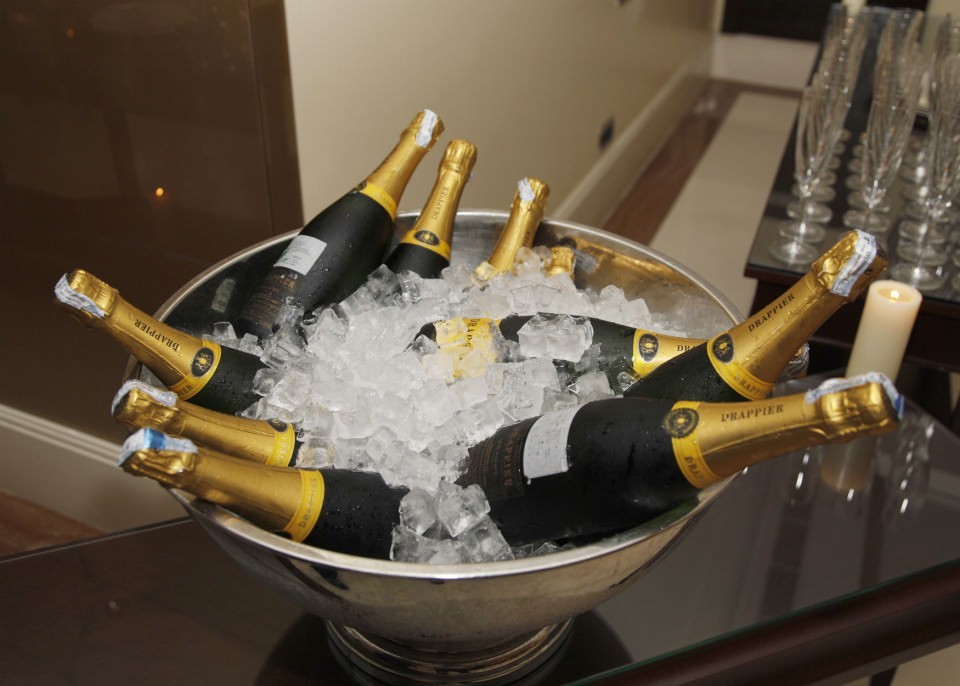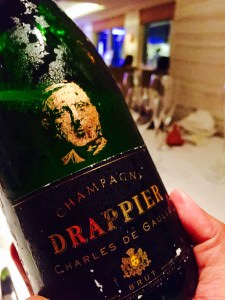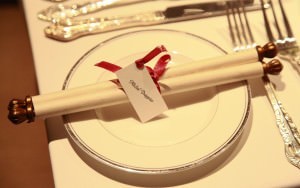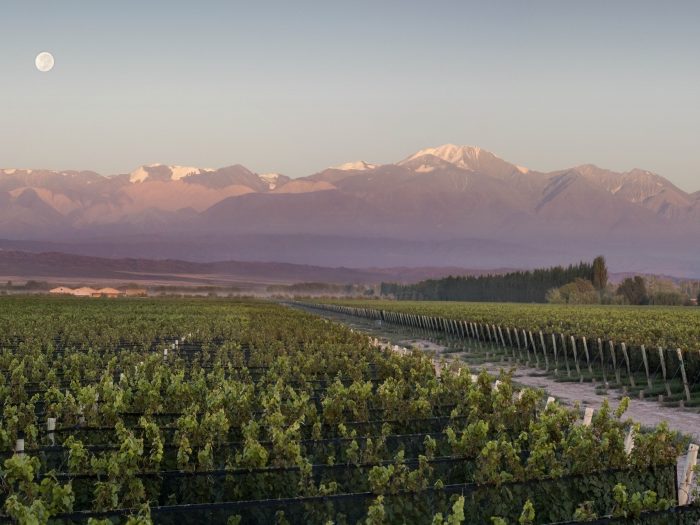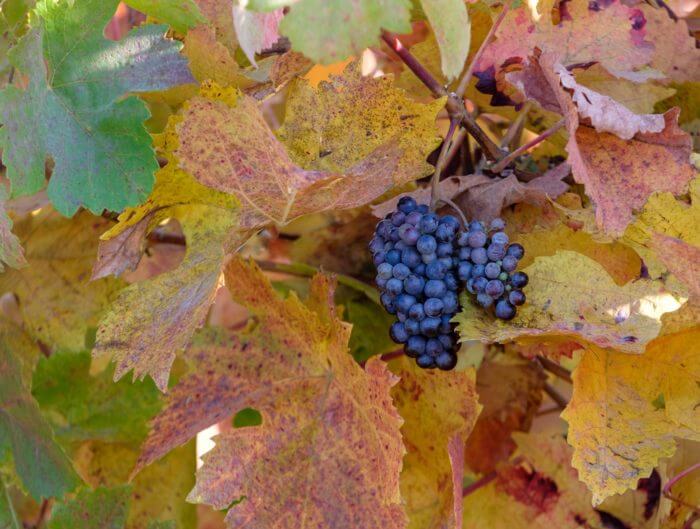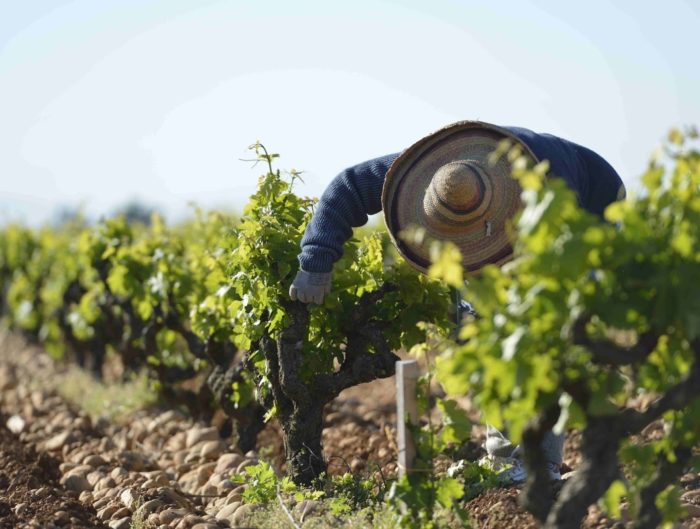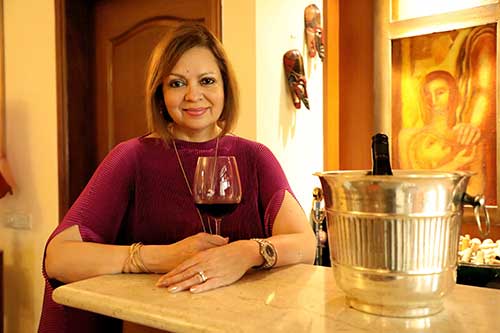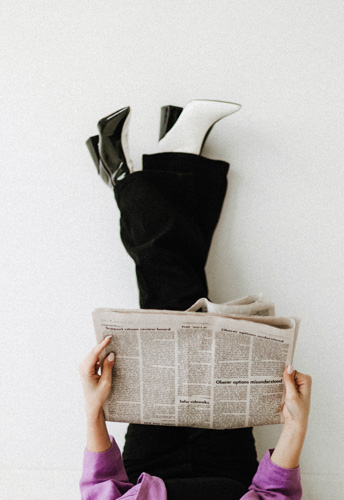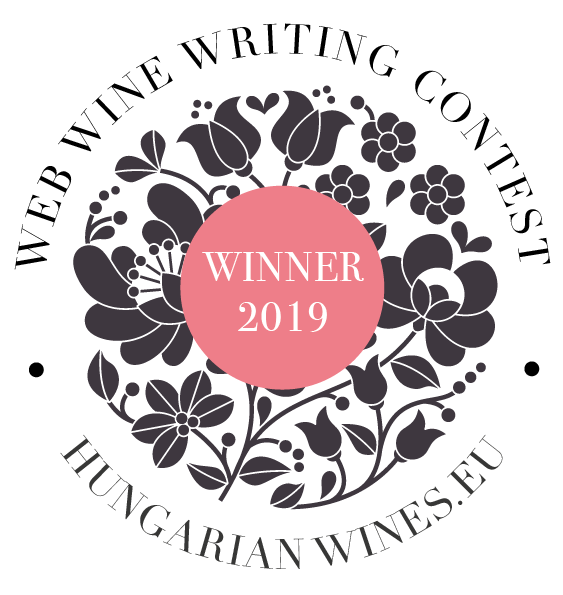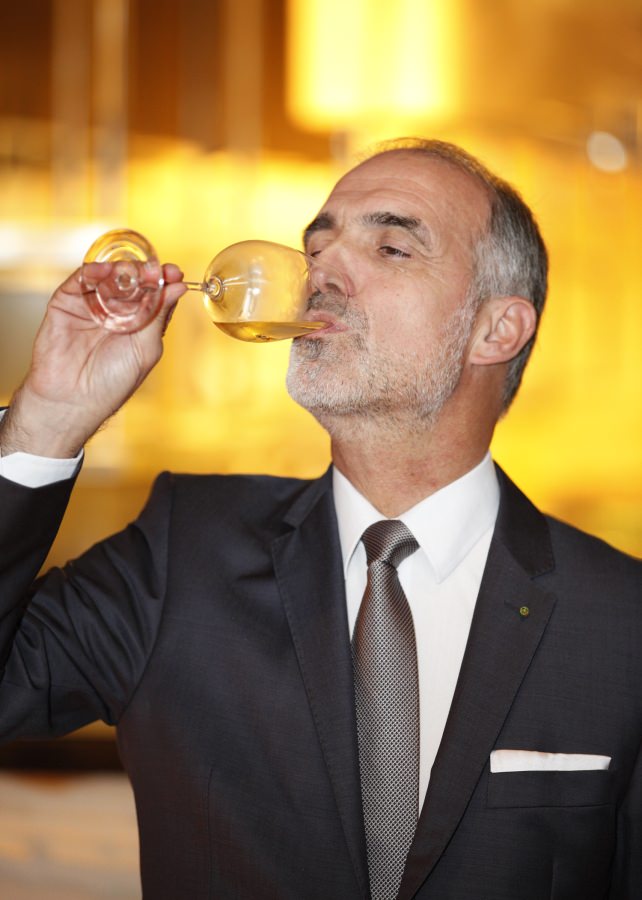
Michel Drappier sips his champagne at the Bangalore Wine Club dinner. Image courtesy Ritz Carlton Bangalore
Michel Drappier visited India and left his mark. Sitting down to analyse why, several things popped into my mind. One, that he was fluently expressive about his champagnes – probably one of the most fluent and expressive winemakers I’ve met recently. And he was also friendly and engaging enough for a fellow blogger to swooningly refer to him as the Don Draper of the champagne world. Quite a hyperbole, but then again champagne, they say, is all about bubbles, the good life and perhaps a few Mad Men. Not that there is anything mad about Drappier. He is sharp and articulate. It also helps that he makes very good champagne.
Drappier’s wine is also expressive. And different. A little apart from the majority of delicate, elegant grandes marques so beloved of the champagne-quaffing cognoscenti attending every fine dinner and celebration. Here are wines with body, made to be paired with food. Reason enough for Champagne Drappier to be named one of the top #3 Champagnes You Never Heard Of by Forbes magazine. A non sequitur? Peut-etre. Read on.
An hour before a 50 guest, 6-course sit-down dinner at The Ritz Carlton Bangalore featuring six stellar and distinct Drappier cuvées, I sat down for a tête-à-tête with Michel Drappier. My first question to him was one that I ask many producers of fine wine who come a-calling to India. With its tough taxes and niche profile of wine drinkers, what made him think India was worth the major spend in terms of time and effort?
“Yes I do,” he said, “I agree, India is very small for Champagne – there are only 17 champagnes listed in India out of the 5000 houses in Champagne. Even China, for that matter, has only 100 champagnes listed. But in Champagne we feel these numbers will grow. I am optimistic. I don’t want to be big. I just want to be available in places where champagne lovers live.”
This July’s much awaited listing of Champagne as a World Heritage site by UNESCO has moved things up a notch for Comité Champagne, the powerful trade organization representing Champagne growers and producers. Drappier is situated a little off the beaten track in the Côte des Bar region in southern Champagne’s Aube – a tiny village called Urville. “The heart of Drappier beats in the village,” he said dramatically, going on to describe with passion the soil, so similar to that of Chablis nearby. The rich soil lends minerality and heft to the Pinot Noir which forms the backbone of Drappier’s champagnes. (Michel’s grandfather Georges was the first to plant Pinot Noir grapes in the Aube, earning the nickname Père Pinot.)
“We have remained loyal to Pinot Noir for 900 years,” he agreed of his Pinot Noir-dominated cuvées. The family-run business has undergone some changes. When Michel took over from his father André (creator of Drappier’s signature cuvée the Carte d’Or), he did a 180 degree turnaround, moving determinedly towards organic and sustainable viticulture. “One-third of Drappier is certified organic, for the rest we practice sustainable viticulture. I’m allergic to sulfur myself, as is my father; so very little sulfur is used, if at all in our wines. In 2009 we released the first sulfur-free champagne, a 100% Brut nature sans soufre. I think India has the palate for Drappier. So while many champagne houses speak of being in London and New York, we are happy being in Bangalore.”
If Michel’s grandfather invested in the vineyards, his father developed the estate, introducing new winemaking techniques like the stainless steel tanks used today. As for Michel himself, he is something of a throwback, he confessed. “When I did my first vinification in 1979, I realised we had a good estate. But I decided we must go back to the soil which was the soul of our wine.” There was inevitable disagreement with his father over the sweeping changes, as Michel started eliminating chemicals, allowing weeds to grow and returning back to custom-made oak barrels of varying sizes for different cuvées (“a little oak is good – but not too much”). He also began using organic sugar cane, matured for 25 years prior to use for the dosage. He believes that by turning back to nature (solar power, organic cattle manure, vineyards ploughed by horses), and integrating this with the best technology has to offer (temperature controlled cellars, cleaning of tanks by high pressure water jet) the winner is quality. After all, “Champagne is a fine wine with great bubbles.”
These innovations come at major cost, but Drappier refuses to consider compromise or consider selling out. “We are a small family-owned company and we pay huge inheritance taxes as per French law, yet our independence is of greatest importance for us. We have no shareholders to keep happy. We are content to stay small. We don’t want to please everyone.The honour of my family is present in every bottle of Drappier.” The ‘small’ company is nonetheless currently present in 95 carefully selected countries and some of the world’s best restaurants (La Tour d’Argent in Paris, for instance).
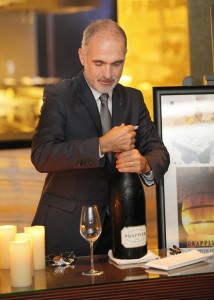 Drappier has often spoken of the ‘emotion’ that champagne is associated with – that intangible yet omnipresent something in every bottle that makes it stand apart from any other wine. “Champagne is not only wine. It’s a symbol of peace – Reims has been the bloodiest battlefield in many a war – and of reconciliation. It is glamorous, it is romantic, it is celebratory – it is there when you celebrate love, life, success… yet it must speak of its soil, the minerals, the complexity of its terroir, the skills of its winemakers – when you drink champagne you must feel the 400 years of its history.” Don Draper, are you taking notes?
Drappier has often spoken of the ‘emotion’ that champagne is associated with – that intangible yet omnipresent something in every bottle that makes it stand apart from any other wine. “Champagne is not only wine. It’s a symbol of peace – Reims has been the bloodiest battlefield in many a war – and of reconciliation. It is glamorous, it is romantic, it is celebratory – it is there when you celebrate love, life, success… yet it must speak of its soil, the minerals, the complexity of its terroir, the skills of its winemakers – when you drink champagne you must feel the 400 years of its history.” Don Draper, are you taking notes?
During the course of the dinner that followed, a multi course extravaganza which matched champagne with the food, Drappier shared stories of Drappier champagne at the Élysée Palace, its presence in the Presidential wine cellars over the years, and how Charles de Gaulle had been a fan, which was why a special cuvée was named after him. “No matter which presidents have been coming or going, Drappier has remained at the Élysée Palace. It was even served during the visit of your Prime Minister Narendra Modi recently,” he twinkled. “Yes, I believe he does not drink, but let me just say I heard that the Indian delegation enjoyed our champagne a lot!”
Ceremoniously popping a jeroboam of Drappier Millesime Exception 2002 amidst flashes from cameras and camera phones, Drappier joked, “The magnum is the right size of bottle for a tête-à-tête with madam – only if madam doesn’t drink. Else, it must be the jeroboam.”
With Michel Drappier, we drank the Drappier Carte d’Or as aperitif (70% Pinot Noir). The Charles de Gaulle Extra Brut followed, at 80% Pinot Noir. Then came the Blanc de Blanc Signature, a Chardonnay with ‘une touche’ of Pinot Blanc. And finally, the Drappier Millesime Exception 2002 in jeroboam, and the 2010 vintage – 60% Pinot Noir, 40% Chardonnay – partly matured in French oak. The grand finale was the Drappier Grande Sandrée rosé, a rare rosé champagne with body and character created by the rarer saignée (bleeding) method of making rosé champagnes.
Now, on my to-taste list remains the very special cuvee Quattuor, where Drappier has used the obscure grape variety Arbane as one of the four grapes in the wine (Arbane is a dry white variety with a low yield), along with Petit Meslier, Pinot Blanc or Blanc Vrai, and Chardonnay.
I guess I must make a trip to Urville in Champagne for that.
(Drappier also has the rare distinction of being the only house in Champagne to do their second fermentation in all bottle formats starting from the 375-ml half-bottle up to the Nebuchadnezzar (15 litres or 20 bottles), and even the rare Melchizedek (30 litres or 40 bottles).)

